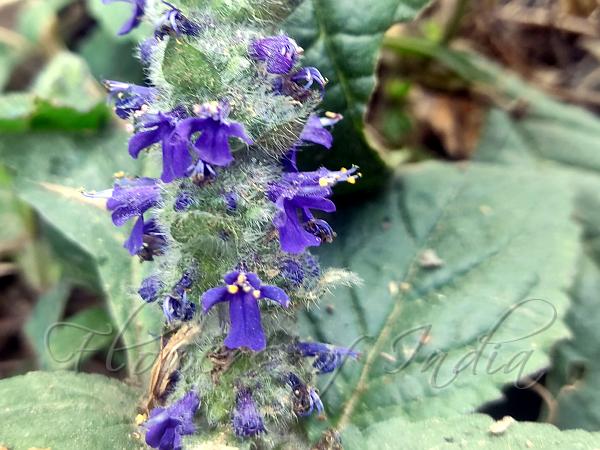|
| Basil Bugleweed |
|

|

| File size | 735693 |
| Original date | 1/6/23 2:22 PM |
| Resolution | 3840 x 2160 |
| Flash | Flash did not fire, auto |
| Focal length | 4.74mm |
| Exposure time | 1/33s |
| Aperture | 1.79 |
| Focus Distance | |
| Metering Mode | Average |
| Camera make | Xiaomi |
| Camera model | Redmi Note 10 Lite |
| Sensor type | MonochromeArea |
|
|
|
|
Photo: |
Botanical name: Ajuga macrosperma Family: Lamiaceae (Mint family)
Synonyms: Ajuga sikkimensis, Ajuga macrosperma var. macrosperma, Ajuga geniculata
Synonyms: Ajuga sikkimensis, Ajuga macrosperma var. macrosperma, Ajuga geniculata
Basil Bugleweed is a variable, straggling
herb, with stems postrate or ascending, 12-90 cm, becoming hairless to
densely hairy. Flower are light to dark blue or purple, 8-10 mm; tube 6-7
mm, clearly geniculate or at least gibbous on upper side near base;
upper lip about 2.4 mm; lateral lobes of lower lip oblong, usually
notched, nearly equal in length to middle lobe. Calyx is often
somewhat two-lipped 4.5-5.5 mm, sparsely to densely hairy, teeth 0.7-2
mm, oblong. Flowers are borne in distant clusters, all but
lowermost subtended by bracts less than 1 cm long. Leaves are ovate-elliptic, 2.5-13 x 1.5-6.2 cm, pointed
to somewhat blunt, base wedge-shaped to narrowed, margin usually
irregularly rounded toothed-sawtoothed, velvet-hairy to sparsely hairy,
leaf-stalk up to 2 cm. Nutlets are about 2.5 x 1.7 mm, obovoid.
Basil Bugleweed is found in the Himalayas, from
Kumaon to NE India, Laos, Myanmar, Nepal, Thailand, Vietnam, altitudes
of 400-2600 m. Flowering: January-March.
Medicinal uses: The plant is used in the
treatment of nephritis. The juice of the roots is applied to boils and
pimples.
The plant is used in the
treatment of nephritis. The juice of the roots is applied to boils and
pimples.
Medicinal uses:
 The plant is used in the
treatment of nephritis. The juice of the roots is applied to boils and
pimples.
The plant is used in the
treatment of nephritis. The juice of the roots is applied to boils and
pimples. | Identification credit: Tabish, J.M. Garg | Photographed in Imphal, Manipur & Morni hills, Haryana. |
• Is this flower misidentified? If yes,